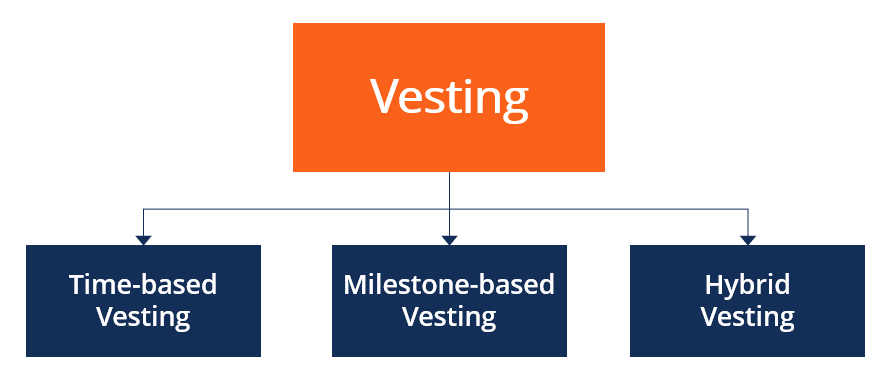Vesting
Vesting is the process by which an employee acquires a “vested interest” or stock option in their company. The stock option, equity, or employer-specific contribution is typically offered by the company when the employee has been at the organization for a given number of years. Employers may also make contributions to the 401(k) retirement plan for employees as part of the vesting process.
Types of Vesting
1. Time-based Vesting
Time-based vesting is a method of vesting through which employees earn their share of stock options over time, usually based on a set schedule and a cliff – which is the time when the employee’s first option is granted and exercisable. After reaching the cliff, the remaining options are issued on a monthly or quarterly basis, depending on the vesting schedule.
Typically, companies offer vesting contracts with a one-year cliff – which means that the minimum amount of time that an employee needs to stay at the company before earning a vested interest is one year.
Example
Suppose Jane receives an offer from her employer that grants her a total of 2,000 shares over five years, with the first 400 exercisable stock options after completing one year at the company, after which she will receive 33.33 shares each month for four years, totaling to 400 shares/year and 2000 shares over the five-year period.
The above scheme is a vesting schedule that the employer uses to encourage loyalty and provide Jane with an incentive to stay motivated at the company. It is illustrated in the graph below:
2. Milestone-based Vesting
Milestone-based vesting refers to the method of vesting whereby the employer grants stock options and/or benefits based on the completion of specific tasks or the achievement of certain objectives that are set by the employer.
For example, employees working in the sales department of a software company may be given stock options after they are able to sell a certain number of units. Similarly, employees of an accounting firm may be granted options based on the number of audits they complete each month. Milestones may differ by firm, by the department, and by job function.
Other than employee-specific milestones, a company may set a milestone that applies to the whole business and grant stock options to all employees who contribute to reaching the goal.
3. Hybrid Vesting
Hybrid vesting is a combination of time-based vesting and milestone-based vesting. In this method, employees must stay at the company for a certain amount of time and reach a particular goal or milestone to be eligible for exercisable stock options.

































